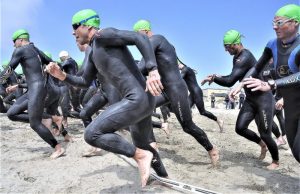Obstacle race
Over the past half-decade, obstacle races have taken over the extreme sports world by adding different physical challenges to a normal circuit race in order to create intense endurance races. Obstacle races are generally known as Sparta, Gladiator, Death Racers and Mud runners. People who love to participate in an obstacle race are extreme sportsmen and women in excellent physical condition who like adventure and adrenaline.
What is the obstacle race?
The obstacle race is something similar to mixing the toughest military exercises you can imagine in a five-kilometer race, while you deal with things like mud puddles and a lot of obstacles, they are designed to physically and mentally demand the athlete. In most races, endurance, speed, strength and dexterity will be tested.
About the obstacle race
Obstacle races have become very popular in recent years worldwide and consists of runners who have to cover a certain distance in the shortest time possible while overcoming a large series of obstacles. These obstacles change in difficulty and can range from passing a water puddle to climbing and passing large walls in order to continue in the competition. The distances covered also vary in the number of kilometers athletes must travel.
Obstacle race history
The obstacle race has its origin in Ireland. There, the original competition consisted of running from one village to another in the shortest time possible while crossing a large number of obstacles along the way. In 1865, the race underwent some modifications because barriers were attached to the road on the grounds, and from here, the idea of what we see in races today was born.
From the stadium, where the oldest Olympic Games took place, to the present day obstacle race, athletes have been faced with some kind of obstacles. The concept of using obstacles for an endurance event is a modern phenomenon. The modern race known as Tough Guy is considered to be the “oldest” obstacle course of our time, started in 1987.
Technique
The technique is mainly based on travelling the established distances overcoming the different obstacles that it presents. Depending on the obstacle will be the techniques used by different athletes. Each one of them has its own technique, although the adequate strength and cardiovascular exercises are two of the skills that must be mastered and improved day by day.
Training
The key to training is to incorporate exercises that reproduce what you will do on race day. It’s best to do endurance training at least two to three days a week, do push-ups and practice similar exercises to help improve performance in the race. Improving cardiovascular training and strength are necessary during an obstacle course, so everyone should have a basic role in preparing for the race. Taking days off between workouts is essential for proper muscle recovery, being well hydrated every day and especially the day of the race will help you get ahead.
Obstacle race rules
Some of the most important are:
- The race starts and officially ends when the last competitor crosses the finish line.
- Classification is determined after penalties and bonuses have been awarded.
- The competitor who crosses the finish line in the shortest time and with the fewest penalties is declared the winner in his category.
- Career management reserves the right to award bonuses throughout the career and to give bonuses to people who have helped others in distress.
- All disputes, not included in the rules, will be decided by the Race Director.
- Athletes must be in good physical condition.
- The race is not recommended for people who have a medical condition.
- All competitors must also inform the Medical Team of any illness or injury that occurs during the event.
- By registering for the event, the participant declares that he agrees to provide first aid, perform other medical procedures and transport the victim to a safe place.
Track
Obstacle race tracks may vary depending on the type of race being held. You may encounter small or large obstacles. From boats that you will have to jump to big walls that you will have to climb, puddles full of water, handrails, tires and many more can be found along the race tracks. Also, tracks can be made in a cement place and add obstacles, or they can be made in an open field, like a mountain or on a plain, depending on the type of race.
Clothing
It is better to avoid the use of cotton t-shirts and sweatshirts, you should be aware that you will suffer some scratches and bruises. It is best to wear breathable clothing, which absorbs sweat and moisture. Compression or tight clothing is the best option, as it will stay close to your body while you move and reduce the chances of getting stuck in an obstacle. For the type of footwear you should use, it is best to choose a pair that you are willing to detach from as many of them will not survive the race. Those that have a good grip, are lightweight and do not retain water are your best option. Finally, consider investing in gloves that don’t cover all your fingers to help prevent rope burns and splinters, and a handkerchief to avoid the large amount of mud you’re likely to have in your hair.
How to cite this article?
Briceño V., Gabriela. (2019). Obstacle race. Recovered on 4 January, 2025, de Euston96: https://www.euston96.com/en/obstacle-race/










